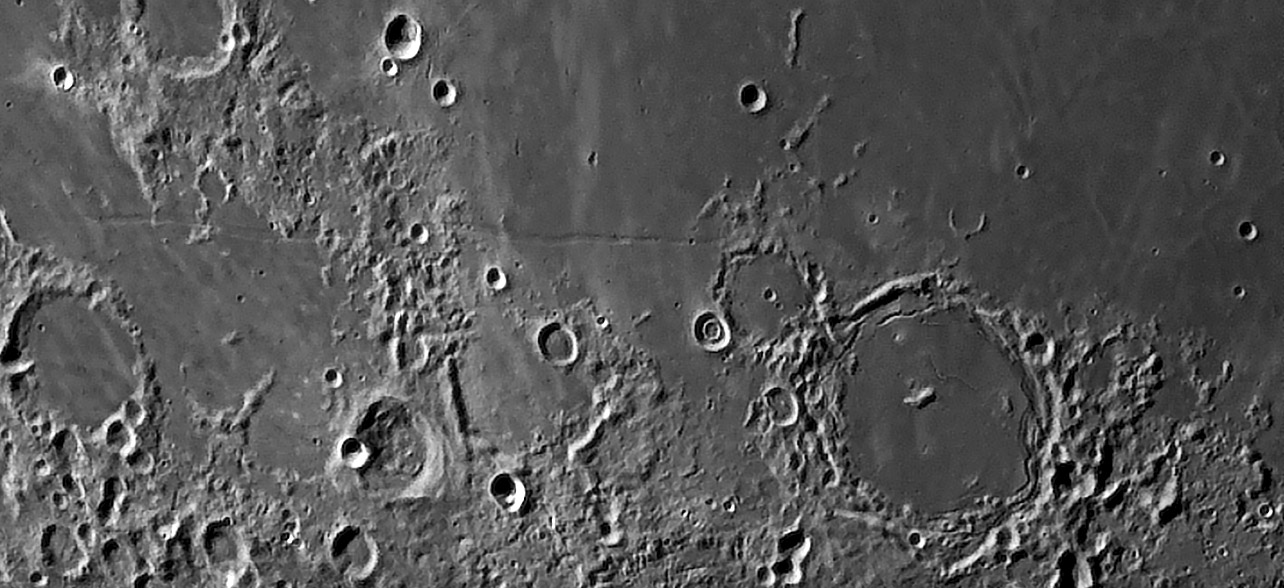March 3, 2021
End of the Rille
Originally published July 15, 2011

image by Jordi Ortega (Barcelona, Spain)
LPOD welcomes a new contributor with an excellent image that makes me think.
The conspicuous features are Pitatus with its edge-hugging rilles, and Hesiodus
A, one of the largest concentric craters. Just above these features is the Hesiodus
Rille which crosses mare and highlands and then stops. It peters out to the west,
perhaps covered by later lavas, but in the east it stops against the rim of the crater
Hesiodus. Mare Nubium and the rille are younger than Hesiodus. Why did the rille
stop there but continue through the highlands to the west? If we knew what forces
caused the rille's formation we might be able to answer that question. The rille is
not radial or concentric to any basin, as many linear and arcuate rilles are. But it
probably either formed over a bend in the crust due to the mare side subsiding, or
it is over an igneous dike that intruded into the crust, causing it to uplift slightly and
collapse into a trough. So, did the subsidence not continue to the east? No, for the
center of the Nubium basin is lower than its edges. And we don't have any idea
why a dike would be there in the first place. An unsatisfactory situation.
Chuck Wood
Technical Details
23 June 2011 04:24 UT. Meade 10" at f/10. DMK 31 camera with Baader Is pass filter. Best of 2304 frames aligned with Registax 6 and post-processed with Astroart 6
Related Links
Rükl plate 53 & 54
Yesterday's LPOD: Van Gogh Moon
Tomorrow's LPOD: Animated Drawings - a Lunar First?
COMMENTS?
Register, Log in, and join in the comments.



